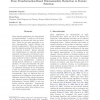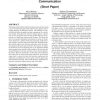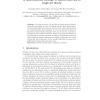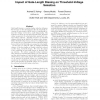1031 search results - page 8 / 207 » Broadcasting with Selective Reduction |
DSN
2006
IEEE
14 years 1 months ago
2006
IEEE
In previous work, it has been shown how to solve atomic broadcast by reduction to consensus on messages. While this solution is theoretically correct, it has its limitations in pr...
ICML
2010
IEEE
13 years 8 months ago
2010
IEEE
Many learning applications are characterized by high dimensions. Usually not all of these dimensions are relevant and some are redundant. There are two main approaches to reduce d...
ATAL
2008
Springer
13 years 9 months ago
2008
Springer
The design of deterministic and fair mechanisms for selection among a set of self-motivated agents based solely on these agents' input is a major challenge in multiagent syst...
RSKT
2009
Springer
14 years 16 hour ago
2009
Springer
In rough set theory, the problem of feature selection aims to retain the discriminatory power of original features. Many feature selection algorithms have been proposed, however, q...
ISQED
2006
IEEE
14 years 1 months ago
2006
IEEE
Gate-length biasing is a runtime leakage reduction technique that leverages on the short-channel effect by marginally increasing the gate-length of MOS devices to significantly ...




